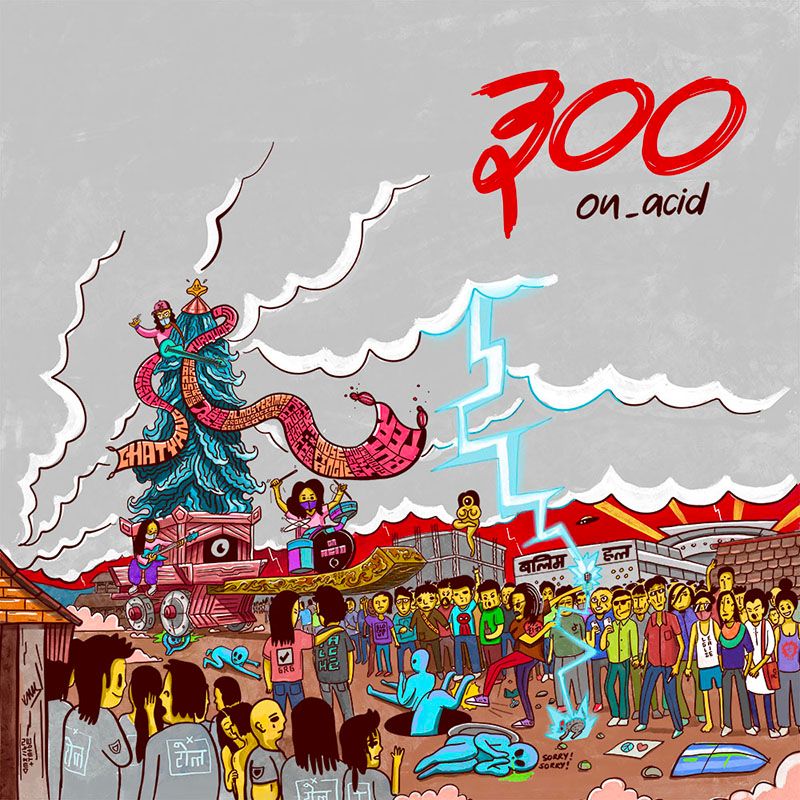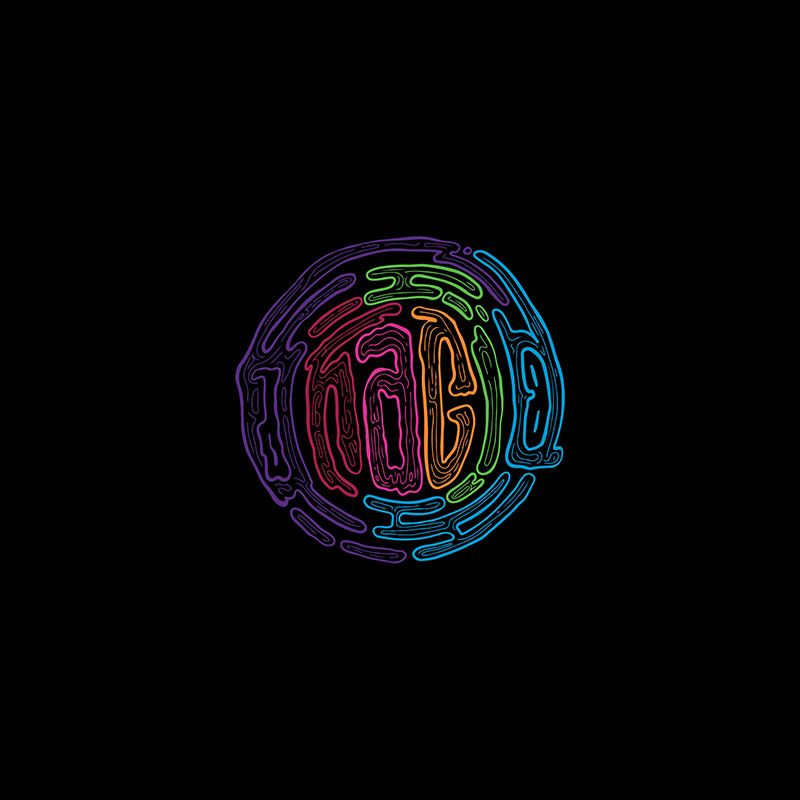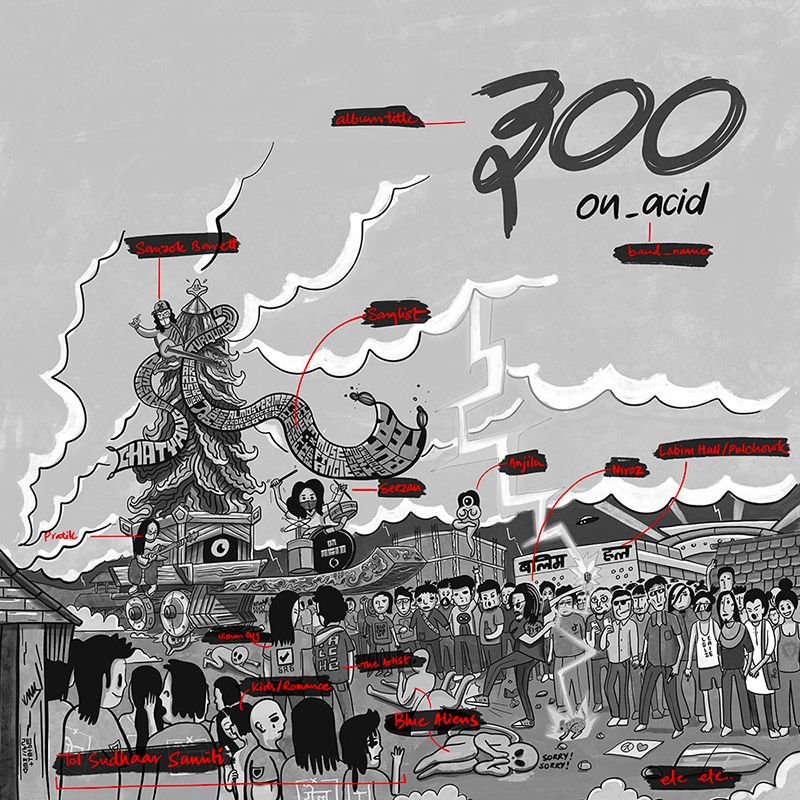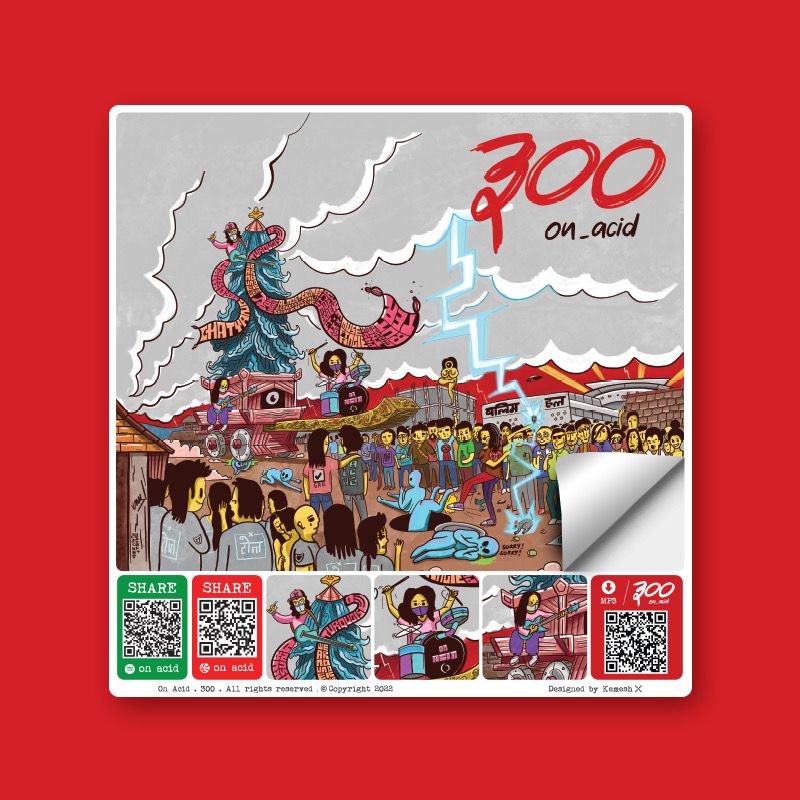
Have you ever wondered how album arts are made and what purpose they serve? Everyone loves music according to their preferences and genre; many love it because of their artwork. Many popular albums have very interesting covers that give the album a personality.
Album art can serve as an identity of the genre and the band. With the advancement of streaming applications and online music libraries, we can explore more songs than we can imagine. Today we can see so many album arts in our daily life.
Know the Band

Album art style is always driven by the band's nature, members, and genres. One should know about the band before commencing the album art concept.
On acid is a psychedelic/punk-rock band based in Lalitpur, Nepal. They started their band career on 2018 as a trio: Pratik Thapa on the vocals and lead guitar, Sanjog Maharjan on the back vocals and bass, and Seezan Maharjan on drums. Together, they came up with their own genre title Squash-Rock.
They have produced two full-length albums to date. The first album was named Roti-Ping, and this second album is called 300.
Album Art Concept
The first step in conceptualizing the album art would be listening to the album. Listening to the album gives you an idea about the band's music, lyrics, emotions and genre. You should try to generate images and compositions in your head during this mental process of hearing.
The concept for this album art came to me when I listened to a song from the album titled Aija M*ji Eka Ek. Specifically, this song was powerful, high tempo, lyrical punk-rock, featuring Niroj Shrestha, a Nepali underground band singer/songwriter. The music and lyrics of this song were inspired by the "Jatra Riot", where the clash between the public and the police took place on September 3, 2020.
The Jatra Riot
Let's start by talking about the Jatra Riot. Rato-Machhindranath Jatra (Jatra in short) is one of the most important festivals for the Newari people of Lalitpur. It is celebrated as an offering to the rain god to bless the year with a good amount of rain for a good harvest.
Other Newari districts such as Bhaktapur celebrate Bisket Jatra, and Kathmandu celebrates Seto-Machhindranath Jatra during this season. This usually happens before the monsoon shower of the mid-Baisakh (Mar-Apr) month in the Nepali calendar. It has many historic symbols and beliefs that you can find across the internet.
In 2020, the pandemic lockdown had already delayed the procession for many months. The chariot lay still in Pulchowk for months. There was news that the Jatra would be conducted following COVID-19 protocols, and everyone was looking forward to the event. All the preparation for the Jatra had been completed.
But on September 3, 2020, after months of delays, people gathered at Pulchowk for the Jatra event. But the chariot was surrounded by the police force to stop it from happening. This sparked the clash between the people and the police as the local people who were ready to pull the chariot were held back and stopped from doing so.
It is said that once you have prepared the god, its procession must be completed. But the Newari people from Lalitpur were stopped. The riot injured many people, and many police officers were beaten up.
From my perspective as a Newar, the Jatra could have been commenced successfully with proper measures and protocols. Even during the pandemic, many people travelled in flocks to several TikTok popularized spots, and the government had no control over them. So Jatra wasn't something to be held back for that year.
Maybe as coincidence or not, that year, we had no rain for the whole season, bringing drought and wildfire across the nation. The city was also covered in smog for months.
Ideation
Now, after the research and concept background, I started ideating the thumbnails and composition of the artwork to depict the scene of the very day and the riot in a more parodic manner. Like the band's genre, logo and previous album artworks, I tried to make it as colourful as possible, with crowds, band members, violence, parodies, stylized psychedelic look and easter eggs. The chariot was also cartoonized to respect the culture and traditional art and avoid critics. The album title was not fixed yet.

Album Title

As an artist/designer of the band, like the previous title, Roti-Ping, I was asked again to decide on the title and artwork for this new album. The first name decided was Chatyang (meaning lightning and thunder in Nepali), which was also the name of the first song on the tracklist. Then as I ideated through the artwork concept, the movie 300 popped into my mind, as the artwork reflected rage, anger and mosh-pits. So in that honour, I translated the 300 font style and idea to the Nepali version.
I hand-wrote it and placed it at the top corner of the artwork while drafting the artwork composition. After the name was confirmed, I also replicated the kick scene illustration in my own style for the artwork. I wanted to make it look like a stamp with an illustration marking a historic event, with a price in the corner.
The album's price was also marked as Rs.300 on behalf of the album title. Finally, we created a layout with artwork and QRs (link to download, Spotify, Instagram and Noodle) and printed the album in the form of peel-out stickers.

Hope you liked it! Subscribe below for more blogs like this and leave a comment.
